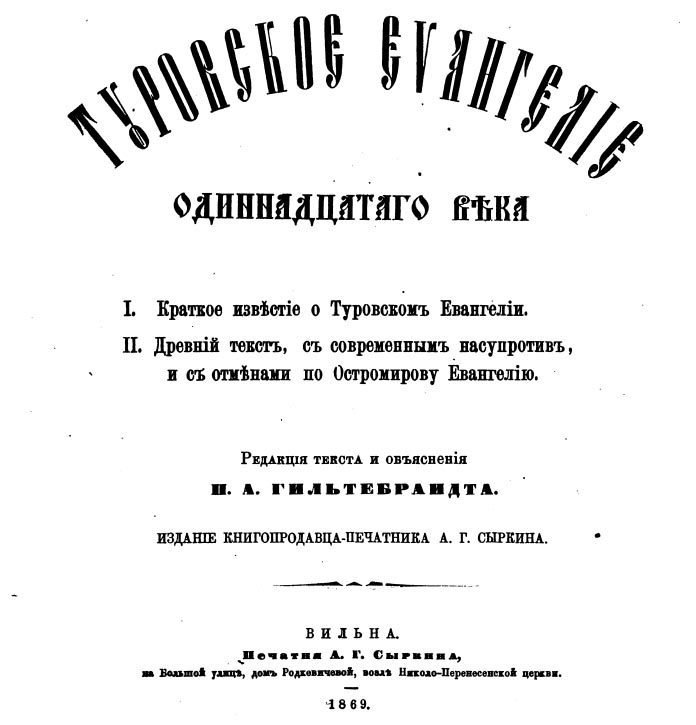From the "Tale of Bygone Years", it is known that Prince Yaroslav the Wise of Kyiv, in the early 11th century, gathered translators and scribes of religious books in the St. Sophia Cathedral to help spread the Word of God. Educational activities gradually spread to other principalities. One such handwritten Christian artifact is the Gospel-apraxos found in Turov in 1865 during a scientific expedition organized by the Vilna educational district. An apraxos is a Gospel whose text is not written in canonical order. This type of religious writing was common during the period of early Christian Eastern literature.

Of the entire Turov manuscript, 10 sheets have been preserved. Turov leaflets, as scientists call them, were discovered in a coal box by two Vilna teachers - N. Sokolov and V. Gryaznov. The historical find was given for detailed study to the public library in Vilna.
The manuscript was written in chestnut ink, on sheets of untanned rawhide, 22.2 cm long and 17.8 cm wide. This type of writing was common in the Slavic lands in the early Middle Ages. The found manuscript has 11 initials - capital letters, painted in three colors - green, blue and red. After analyzing the features of writing, the researchers came to the conclusion that the manuscript was created in the middle of the XI century.
Religious books of the early Middle Ages often turned out to be useful as important documents - information about the purchase, sale, donation of land and property was recorded in the margins of manuscripts. Thus, the Turov gospel preserved two supplementary notes on the Transfiguration Church in Turov. From the records you can learn that the hetman of the Grand Duchy of Lithuania K. Ostrozhsky and his family at the beginning of the 16th century twice gave agricultural land to the church and its priests. This allowed scientists to conclude that the Gospel belongs to the Turov temple specified in the manuscript. Under what circumstances the handwritten edition disappeared from the church and how it ended up in the coal box is still unknown.

In 1868, a colored lithographic edition of the Turov Gospel was published in St. Petersburg. A year later, historian and archivist P. Giltbrand published his research and explanations on the ancient text.
During the First World War, the Turov manuscript, which was kept in the Vilna Library, was taken to Moscow. After the end of the Great Patriotic War, the Gospel was transferred to the library of the Lithuanian Academy of Sciences, where it is kept to this day.
In 2014, as part of the restoration of Belarusian cultural heritage and initiated by the National Library of the Republic of Belarus, a facsimile edition of the Turov Gospel was created. It was distributed to schools, libraries, education departments, museums, and other cultural and educational institutions of our country. Now, anyone interested can view a copy of this national literary relic. The publication is not merely a copied version of the ancient manuscript. It is supplemented with essays and scientific articles and has been translated into modern languages - Russian, Belarusian, and English.